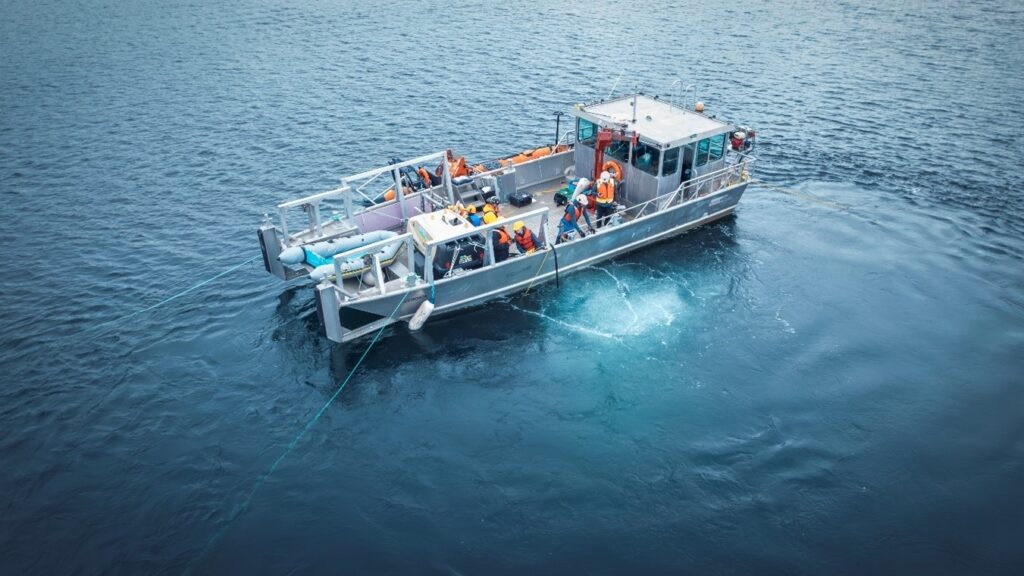Our Solution
C-CORE investigated the use of air bubble-induced upwelling as an innovative method for circulating water and modulating sea surface temperature. The concept leverages rising air bubbles to create vertical water movement, bringing cooler water from lower depths to the surface during warm periods – or promoting mixing during colder months.
To support this work, we conducted a combined program of physical field trials and numerical modeling. Computational Fluid Dynamics (CFD) simulations were used to plan the trials, optimize system performance, and validate the experimental results.
Field testing was carried out at The Launch, the Marine Institute’s coastal research facility in Holyrood, Newfoundland. Measurement parameters included:
- Vertical and horizontal velocity measurements using electromagnetic current meters
- Temperature-depth profiles to monitor stratification and thermal response
- Ocean current profiling in and around the plume area
- Dissolved oxygen levels before and during operation to assess ecological impact
These trials demonstrated the potential of bubble-induced upwelling to enhance water mixing and reduce surface thermal stress in environmentally sensitive or aquaculture-dense regions.
C-CORE continues to advance this research with a focus on scaling up the system and assessing long-term ecological benefits. Our work offers a promising step toward adaptive marine technologies that can help buffer the impacts of climate change on vulnerable coastal ecosystems.
